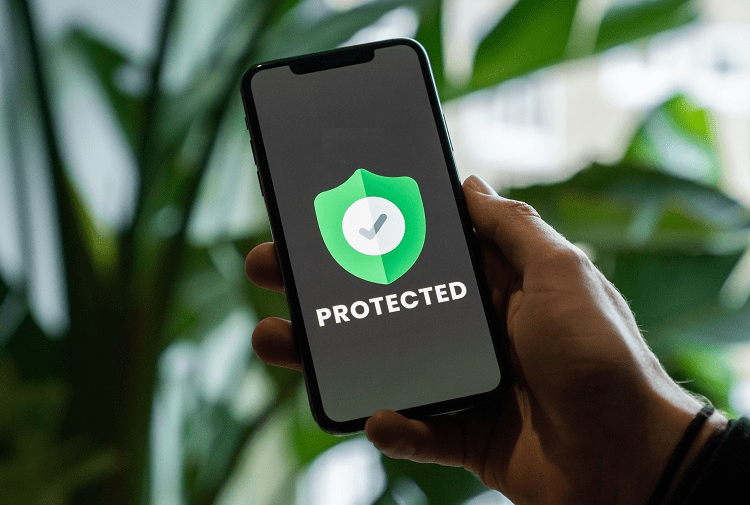The Ultimate Manual for Cybersecurity in the Workplace
Deploying cybersecurity defense measures in your business or organization greatly increases your chances of avoiding digital attacks and loss of data. Without a cybersecurity defense plan in place, you could suffer a crippling attack that leaves your organization without the means to protect customers’ information or to operate as normal.
A successful cybersecurity plan will consist of multiple steps and facets. We’ll help you determine the key items you need to know to create a successful cybersecurity setup for the workplace.
What Is Cybersecurity in the Workplace Anyway?

Implementing a cybersecurity plan in the workplace is a vital aspect of protecting your business from potential problems. Without a workable cybersecurity plan, your organization runs the risk of multiple unwanted outcomes, including:
- Data breaches
- Financial losses
- Ransomware attacks
- Stolen digital identities
- Sabotage of network performance
Not only do these types of problems and attacks lead to potential financial losses for your company, but they can have devastating effects in other areas too.
For example, when you have a data breach related to a preventable cybersecurity issue, customers are going to be less likely to trust you in the future. You may lose clients, as they may choose to go with a competitor. It’s difficult to accurately calculate the financial loss related to the damage to your business’s reputation from the data breach, but it can be significant.
How Cybersecurity in the Workplace Works
It is important to create a culture that emphasizes cybersecurity in your organization. Your plan will not work as well if only your security team has an interest in implementing the objectives of the cybersecurity plan.
Certainly, your security team needs to have the know-how to follow the plan and to set up the hardware and software required to implement the measures. However, other members of the organization must be willing to invest the time, effort, and budget to make cybersecurity a priority for your organization.
Without this support from everyone ranging from top executives to the newest employees, the security plan will end up with holes in it. Consequently, you will almost certainly suffer a data breach or compromised passwords at some point.
We’ll discuss some of the most important aspects of deploying a successful cybersecurity plan for your workplace.
Deploy Common Cybersecurity Practices
Some of the most common ways that companies will implement cybersecurity actions will include:
- Zero-trust security: Any time an employee, vendor, or customer attempts to gain access to your network, that person will need to validate his or her identity. Implementing this level of security means no one can simply gain access to the network because they did in the past.
- Two-factor authentication: One way to verify users with a high level of security is through two-factor authentication (2FA). By deploying 2FA, no hacker can steal only an employee’s password and username to gain access to the network. The hacker would also need access to the employee’s smartphone or email account to defeat 2FA.
- Software tools: Multiple types of security software tools are available that can help your security team monitor the network for any odd behavior from a network member that could indicate a breach or a stolen identity. These tools often can monitor the movement of files on the network as well, flagging any unusual behavior. Such tools, such as the best endpoint protection software, are available from many different vendors.
Make Sure Executives Are On Board
You can spend all the time you want on developing your organization’s cybersecurity plans, but they will not achieve the success you want if executives are not on-board. These executives must sign off on the budget and on the number of team members you need to have.
Any plan you are creating must be something that executives can understand and that they can support. Make certain that you can explain the plan with easy-to-understand language, so administrators can clearly see what you are trying to accomplish.
Have the Right Tools on Hand
Anyone who does home improvement work or professional remodeling knows that the right tools are key to the success of any job. Cybersecurity is the same way. Without the right software and hardware tools, you will reduce your team’s chances of success in the cybersecurity plan.
Whether your workplace cybersecurity plan calls for certain pieces of hardware, certain apps or software packages, or team members with certain skills, make sure you are able to obtain them.
Give Your Training a Human Element
Training members of your organization on the cybersecurity measures they must follow can be challenging. Some team members will become frustrated if you are asking them to change their daily routine. Some will want nothing to do with new technologies.
Rather than making the training sessions too technical or restrictive, consider focusing on the human element of each topic. Explain the importance of cybersecurity in the framework of potential real-world problems the company could encounter, rather than focusing on high-tech topics that employees likely won’t understand.
Keep things light and fun when the situation allows for it, and you’ll receive better buy-in from the entire workplace.
Now we’ll discuss some examples of specific threats that should be part of almost any workplace’s cybersecurity culture and response plan.
Example 1: Password Protection

Password management and protection are some of the most challenging aspects of creating a successful cybersecurity culture in your workplace.
You may want to require that members of the organization use a password manager app for helping them create strong passwords and for helping them remember those passwords. Password managers help employees protect their passwords as well, as they are more secure than keeping a written list of passwords or using the same password on every account.
For an additional security measure, consider requiring employees to make use of two-factor authentication in everything they do as part of their workplace accounts.
Example 2: Phishing Attacks
Phishing attacks don’t seem like they should be successful when viewing them from afar. They seem almost too simplistic to actually work. However, phishing attacks rank highly on the list of the most successful types of attacks that hackers use, just as they have regularly since their introduction in the mid-1990s.
Phishing involves using email messages to try to trick the recipient into revealing some sort of personal information. The attacker may pretend to be an organization with which the victim has familiarity, such as a bank or a social media site.
The phishing attack will provide a link that goes to a fraudulent website or that may have an executable file attached to the email. Ultimately, the attacker tries to steal the victim’s information. In the workplace, this could involve giving up passwords, usernames, or account numbers associated with the company.
During training, you should work with the employees to help them look for clues to spot potential phishing attacks. Knowledge and awareness are keys to avoiding being a victim of phishing.
Example 3: Social Engineering Attacks
Social engineering attacks are similar to phishing attacks, but they go beyond using generic email messages as the means of attack. Rather than hoping that your employee clicks on a fake link in a simple email message, a social engineering attack will involve attempting to make a personal connection with the employee. This makes the interaction more realistic, potentially giving the attacker a better chance at success.
The hacker will spend some time investigating the potential victim, looking for personal information that’s usable. The hacker then may make a telephone call, send an email, or reach out on social media to the victim, trying to make a connection that seems natural.
Eventually, the hacker may create a story, asking the victim for some help. The hacker may play on the sympathies of the victim, requesting some personal information or asking the victim to click on a link that leads to malware.
If the hacker is attempting to seek information for a single attack, the hacker may suddenly disappear, rather than furthering the relationship. Some social engineering attacks, however, involve continuing the relationship. The hacker would continue to try to obtain information, making the relationship seem as natural as possible.
It can be difficult to train for these types of scenarios. However, your best option may be to give employees some simple tips they can use to try to avoid becoming a victim. Give them items they can watch for that are red flags to a potential social engineering attack.
Example 4: Best Practices for Working Remotely

Dealing with employees working remotely has become a way of life for many companies over the past few years. Many teams have strong security measures in place to deal with remote workers and with protecting data when it isn’t residing directly on the secure network.
However, as employees become more comfortable working from home, they may become lackadaisical about following all your security policies and requirements. They may begin cutting corners when it comes to following the cybersecurity protocols you have in place.
Regular training for remote employees, even if it must occur over a video conference call, is important. This gives your security team the ability to continue to emphasize the cybersecurity rules and protocols that you have in place. Make sure remote employees understand the importance of deploying security measures on all devices they are using, including smartphones.
As part of your regular training, though, don’t expect to give employees the same presentation every few months. You will need to come up with new areas of emphasis and new ways to approach the importance of cybersecurity for remote workers to keep your remote employees engaged.
How to Get Started With Cybersecurity in the Workplace

Although the particular cybersecurity plan you will develop for your team depends on the circumstances you face, a few basics should be part of nearly every cybersecurity plan.
Step 1: Lay Out Your Objectives
Start the planning process by taking the time to clearly spell out what the security team is trying to accomplish with the plan. You need to be able to address the specific items that are important to your organization. However, you also want to focus on basic objectives to limit as much of the risk to the organization as possible.
If you have certain industry regulations you must follow in terms of protecting customer data, creating a plan to help you adhere to these regulations is a vital starting point. Are there other standards that your organization wants to implement as part of its cybersecurity plan, creating even greater levels of data protection than the regulations require?
For businesses that have a large remote workforce, the cybersecurity plan may need to focus on mobile security. For those organizations that must allow vendors and clients to access network data, any cybersecurity plan should lay out steps to verify the identity of network users.
Your objectives also should spell out the biggest risk factors to your business. Then use the plan to try to minimize those risks as much as possible, as no cybersecurity plan can cover every potential scenario in detail.
Step 2: Assess Your Security Team
Once your objectives are in place, you will then want to assess the tools and personnel available to your security team. Do you have exactly what you need to match your objectives, or do you need some new tools or additional people?
Can you improve the performance of your team members through additional training? Should the company offer to pay for team members to take certain educational classes or to achieve certain certifications to help you match your cybersecurity plan objectives?
Understandably, spending money on more employees or on new hardware or software options may not be part of your budget. If so, you may need to be ready to present your case to management as to why you need more money in your budget. If this doesn’t work, you may need to return to the first step and adjust your objectives to realistically match the resources you have available.
If you have limited resources, make sure you allocate them to the most important aspects of your cybersecurity plan’s objectives.
Step 3: Try to Avoid Too Many Uncommon Scenarios
One problem you may run into while developing your cybersecurity plan is making it too unique to your organization. You certainly need some particular items that closely match your organization’s needs in the plan. However, if you are too specific to your needs, you may miss some very important cybersecurity measures and objectives that nearly every organization must have in place.
Additionally, by implementing some common items that fit nearly any cybersecurity risk plan, when new people join your security team, they will be able to become effective team members faster. They can work more efficiently if they can carry over some basic cybersecurity practices they learned in past jobs.
Along those same lines, try to avoid being too specific in the plan. If you try to be too fine in understanding cybersecurity scenarios, you may miss some of the simple things you need to do to keep your organization as safe as possible from a cybersecurity standpoint. In other words, don’t forget to handle common scenarios and basic aspects of cybersecurity.
The NIST Cybersecurity Framework is a good starting place to learn more about cybersecurity plans and best practices.
Step 4: Create Measurable Actions
As much as possible, you should try to include objectives in the cybersecurity plan that are measurable. You will want to be able to show that your team is meeting its objectives and accomplishing its goals in the cybersecurity plan.
Creating measurable goals is not always an easy process in cybersecurity. However, when items in the plan are not measurable, it’s easier for team members to make them less of a priority. If team members have other aspects of their jobs that must meet performance metrics, they are likely to focus on those specific items and move the unmeasurable objectives to the back burner.
Another advantage of having measurable actions in the cybersecurity plan is that it becomes easier for management to understand the plan. It’s important to have executives in your business on board with the cybersecurity plan. If they can see the progress your team is making toward your cybersecurity plan goals, executives will be more likely to support you.

